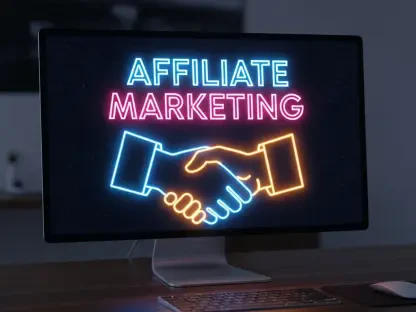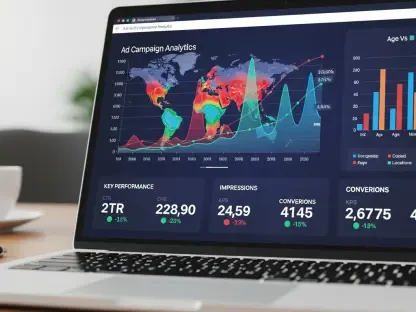Small businesses today face a staggering challenge: managing a patchwork of marketing tools that drain budgets and waste time, with over 60% of small business owners reporting frustration over disjointed tech stacks. Picture a scenario where a single email campaign requires toggling between three different platforms just to build a list, design a message, and track results. This inefficiency not only slows growth but also risks losing potential customers due to outdated data or missed follow-ups. For entrepreneurs and small teams, the need for a streamlined, cost-effective solution has never been more urgent, as every hour and dollar counts in a competitive market.
This guide aims to walk through the transformative potential of a newly unveiled AI-powered email marketing platform designed specifically for small businesses. It offers a step-by-step approach to understanding and adopting an integrated tool that combines CRM, email marketing, and automation into one affordable system. By following these actionable insights, small business owners can simplify their tech stack, save significant costs, and enhance customer engagement without the complexity of multiple logins or expensive subscriptions.
The purpose of this resource is to empower small teams to overcome the chaos of fragmented tools and embrace a unified platform that rivals industry giants. It addresses the critical pain points of high costs and inefficiencies while providing practical steps to leverage cutting-edge AI for personalized outreach. Readers will gain clarity on how to transition from cumbersome setups to a seamless solution, ultimately driving smarter growth with less effort.
Revolutionizing Small Business Marketing with Nimble’s AI Innovation
In an era where small businesses juggle countless priorities, the introduction of an AI-driven email marketing platform marks a pivotal shift in how marketing and sales can be managed. Announced recently through a major press release, this tool is crafted to provide an all-in-one alternative to the often fragmented and pricey options like Mailchimp and HubSpot. Small teams no longer need to endure the hassle of syncing data across disparate systems or paying premium prices for basic functionalities.
The mission behind this innovation is clear: to equip small businesses with a solution that integrates essential functions into a single, user-friendly interface. For many, the struggle with multiple subscriptions has led to wasted resources and missed opportunities. This platform steps in as a game-changer, promising to simplify workflows and ensure that marketing efforts align seamlessly with sales goals.
Beyond just convenience, the focus is on affordability and accessibility for teams with limited budgets. By reducing the dependency on a collection of costly tools, this new offering aims to level the playing field, allowing smaller enterprises to compete with larger counterparts. The emphasis on integration signals a broader movement in the industry toward solutions that prioritize efficiency over complexity.
The Small Business Struggle: Why Integration Matters
Small businesses often find themselves trapped in a cycle of inefficiency due to what industry experts call a “Frankenstack”—a chaotic assembly of disconnected tools that fail to communicate effectively. From email marketing software to CRM systems and sales outreach platforms, each component operates in isolation, leading to duplicate data entries and broken automations. This fragmentation can result in critical errors, such as sending outdated messages to leads or missing follow-up opportunities.
The demand for unified platforms in the software-as-a-service landscape has grown significantly as entrepreneurs seek to eliminate these pain points. A single system that handles multiple functions not only saves time but also ensures consistency across customer interactions. With the right solution, small teams can focus on building relationships rather than troubleshooting tech incompatibilities.
Founded by a CRM pioneer with decades of experience, this innovative platform is positioned to address these challenges head-on. It offers an all-in-one approach that consolidates essential tools into a cohesive environment, reducing the clutter of multiple logins and subscriptions. This shift toward integration reflects a broader recognition that small businesses deserve technology that works as hard as they do.
Breaking Down Nimble’s AI Email Marketing Features
Feature 1: Seamless CRM and Email Integration
Understanding the Unified System
One of the standout aspects of this platform is its ability to combine CRM, email marketing, and sales automation within a single ecosystem. Users can build contact lists, design engaging campaigns, and nurture leads without ever leaving the interface. This eliminates the need to juggle separate tools, ensuring that every step of the customer journey is tracked and managed in real time.
Streamlining Workflows
The integration means that data flows effortlessly between marketing and sales functions. For instance, a lead captured through a web form can be automatically added to a nurture sequence, with all interactions logged for future reference. This cohesive setup prevents the common issue of misaligned information, allowing small teams to respond promptly and effectively to customer needs.
Benefit Highlight: Eliminating Data Silos
A major advantage of this feature is the eradication of data silos that plague fragmented systems. Duplicate records and outdated contact details become a thing of the past as every update syncs instantly across the platform. This saves valuable time for small teams and reduces the risk of errors that could damage customer trust.
Feature 2: AI-Driven Personalization and Automation
Harnessing Artificial Intelligence
Another key component is the use of artificial intelligence to elevate email marketing efforts. The platform automates content creation by suggesting tailored messages, enriches contact profiles with social and business insights, and designs personalized nurture sequences based on user behavior. This ensures that communications are relevant and impactful.
Enhancing Customer Engagement
AI also powers predictive analytics to identify the best times to send emails or follow up with leads. By analyzing patterns in contact interactions, the system helps users craft messages that resonate on a deeper level. Small businesses can thus achieve a level of sophistication in their outreach that was once reserved for larger enterprises with bigger budgets.
Key Advantage: Time-Saving Precision
The precision offered by AI translates into significant time savings for busy teams. Instead of manually researching contacts or drafting individual emails, users can rely on automated processes to deliver customized content at scale. This efficiency allows small businesses to focus on strategy and growth rather than repetitive tasks.
Feature 3: Affordable Pricing for Accessibility
Budget-Friendly Structure
Pricing is a critical factor for small businesses, and this platform delivers with a cost structure starting at just $29 per user per month, with email marketing features available for only $15 per company per month. This stands in stark contrast to the thousands often spent on combining tools from various providers, which can quickly add up to unsustainable expenses.
Comparing Costs
When stacked against traditional setups that require separate subscriptions for email campaigns, CRM, and outreach—often costing hundreds per month—this solution offers substantial savings. Small teams gain access to a comprehensive suite of tools without the financial strain, making advanced marketing capabilities a realistic option.
Cost Insight: Democratizing Advanced Tools
By setting such accessible price points, the platform breaks down financial barriers that have historically limited small businesses. Enterprise-grade features like segmentation and automation become attainable, empowering even the smallest teams to compete effectively in their markets without sacrificing quality or functionality.
Feature 4: User-Friendly Migration and Compliance
Simplifying the Switch
Transitioning from existing platforms to a new system can be daunting, but this tool offers robust migration features to ease the process. Users can import lists and tags from other services with minimal effort, avoiding the tedious task of manual data entry. This ensures a smooth shift without disrupting ongoing campaigns.
Ensuring Regulatory Adherence
Compliance is another area where the platform excels, with features like double opt-in and bounce verification to maintain list quality. These elements help businesses adhere to email marketing regulations, reducing the risk of penalties or deliverability issues. Such safeguards are essential for maintaining a reputable sender status.
Practical Tip: Streamlined Onboarding Process
To maximize the onboarding experience, businesses should take full advantage of the migration tools provided. Starting with a clean, verified list and leveraging built-in compliance features from day one can prevent future headaches. This approach ensures that campaigns launch on a strong, regulation-compliant foundation.
Key Takeaways from Nimble’s Unified Platform
- A unified system that integrates CRM, email marketing, and automation for seamless operations.
- Budget-friendly pricing at $29 per month per user and $15 per month per company for email features.
- AI-driven personalization and efficiency to create targeted, impactful outreach with minimal effort.
- Easy migration and compliance tools that facilitate a smooth transition and maintain list integrity.
Implications for Small Businesses and Future Trends
The emergence of a consolidated platform like this aligns closely with the industry’s shift toward unified software-as-a-service solutions. Small businesses stand to gain immensely from enhanced productivity, as a single system reduces the time spent managing multiple tools. Cost savings also play a pivotal role, freeing up resources for other growth initiatives like product development or customer service improvements.
Looking ahead, the adoption of such platforms could reshape how small teams approach technology investments over the next few years, from 2025 to 2027. Challenges remain, including the need to scale AI capabilities to handle increasingly complex demands or to stand out against entrenched competitors. However, the focus on integration may push other providers to reevaluate their own pricing models and feature sets in response.
This trend also hints at a future where simplicity becomes a competitive edge in the crowded software market. As more businesses recognize the value of streamlined systems, the pressure will mount on traditional giants to adapt or risk losing market share. For small enterprises, this evolution offers a promising outlook, with tools becoming more tailored to their unique constraints and ambitions.
Step-by-Step Guide to Adopting a Unified AI Marketing Platform
Assess Current Tech Stack Challenges: Begin by evaluating the existing mix of tools used for marketing and sales. Identify pain points such as high costs, duplicate data, or time spent switching between systems. Document specific inefficiencies, like missed leads due to lack of integration, to establish a clear baseline for improvement.
Explore the Platform’s Core Features: Dive into the specifics of the unified solution, focusing on how CRM, email marketing, and automation work together. Review capabilities like list building, campaign design, and real-time data syncing. Take note of how these features address the issues identified in the initial assessment.
Leverage AI for Personalization: Experiment with AI-driven tools to enhance outreach efforts. Use automated content suggestions to craft tailored emails and rely on contact enrichment to build detailed profiles. Test personalized nurture sequences to see how they improve engagement rates compared to previous manual efforts.
Plan a Cost-Effective Transition: Compare the platform’s pricing—$29 per user per month and $15 per company for email features—against current expenses. Outline a budget that accounts for the switch, ensuring that savings are reinvested into other business areas. This step helps justify the move financially.
Utilize Migration Tools for Seamless Onboarding: Take advantage of built-in migration features to transfer data from existing platforms. Import contact lists and tags, and verify data accuracy during the process. Use compliance tools like double opt-in to maintain list quality from the start, avoiding potential regulatory pitfalls.
Monitor and Optimize Performance: After implementation, track key metrics such as email open rates, lead conversion, and time saved on tasks. Adjust campaigns based on AI insights and user feedback to continually refine results. Regular monitoring ensures that the platform delivers on its promise of efficiency and growth.
Final Reflections and Next Steps
Having navigated the complexities of fragmented tools, small businesses that adopted this unified AI marketing platform found a path to streamlined operations and significant cost reductions. The journey through assessing tech challenges, embracing AI personalization, and executing a seamless migration revealed how much time and effort could be saved. Each step taken underscored the value of integration over chaos, proving that even small teams could achieve big results with the right technology.
Moving forward, businesses should consider exploring a free trial period, often spanning 14 days, to test the platform’s full potential without commitment. This hands-on experience can highlight unique benefits tailored to specific needs, such as automating follow-ups for a niche audience. Additionally, staying informed about updates and new features ensures that the system remains a cornerstone of growth strategies.
Another vital consideration is to engage with community forums or support resources provided by the platform. Sharing experiences and learning from other small business users can uncover innovative ways to maximize impact, from refining email templates to optimizing lead scoring. These next steps pave the way for sustained success, turning simplified marketing into a powerful driver of long-term progress.









